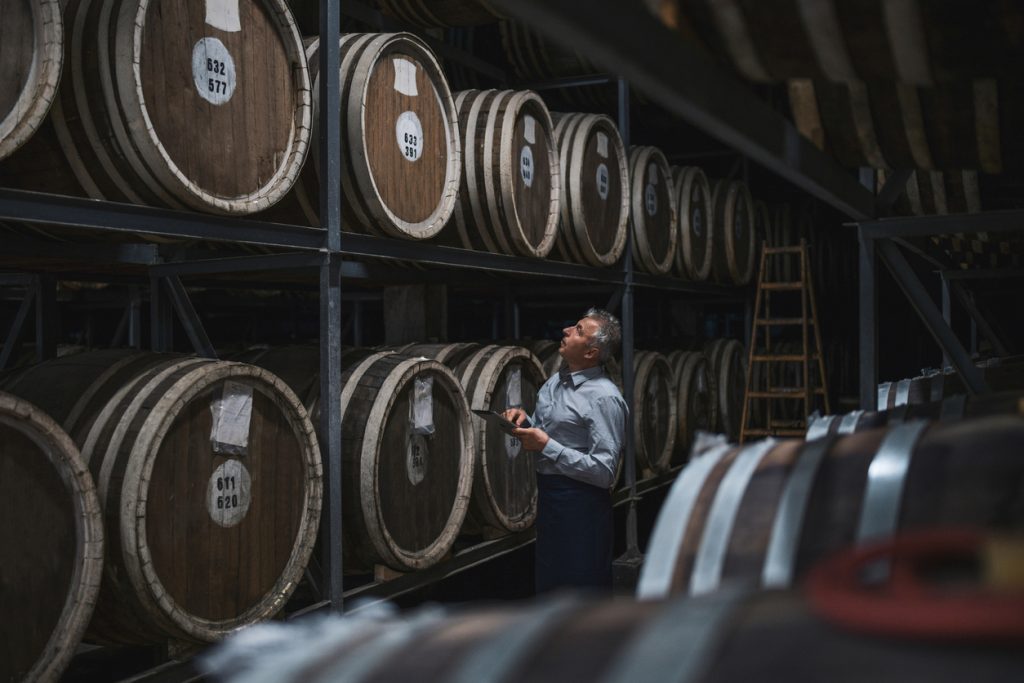
It only takes about a week to distill whisky, but the aging process takes much longer, and it’s this step that makes a whisky great. When it’s freshly brewed, it is more like moonshine—a clear liquid that tastes a lot like the malted barley it’s made from. The taste is potent and chemical and the whisky will need to age and mature for all of its flavour to develop and refine.
When whisky is aged, it is stored in a wooden barrel what imparts the colour and flavour you know and love. What kind of wood the barrel is made of and the conditions in which the barrel is stored contribute significantly to the flavour.
Traditionally, oak barrels are used and the inside of the barrels are charred to impart woody, smoky notes. The wood of the oak barrels absorbs all of the harsher chemicals in the whisky in a process known as adsorption. The burnt oak infuses the whisky with tannins, vanillin and lignin (vanilla notes) and lactones for that smooth buttery base notes.
Of course, new barrels have a more smoky taste so they are generally used to age bourbon. Once the bourbon manufacturers are done with the barrels, they are sent to scotch distilleries who want a smoother, honey flavour and tend to let their whisky age for longer. Scotch gets its smoky flavour from burning peat, used to dry the barley, rather than from the barrels.
Bourbon is not only aged for a shorter time—around two years—it is also stored in a dryer environment. This quickens the evaporation stage. Scotch is stored in a humid climate for longer periods to age slowly (three years or more) for smoother more subtle favours.

